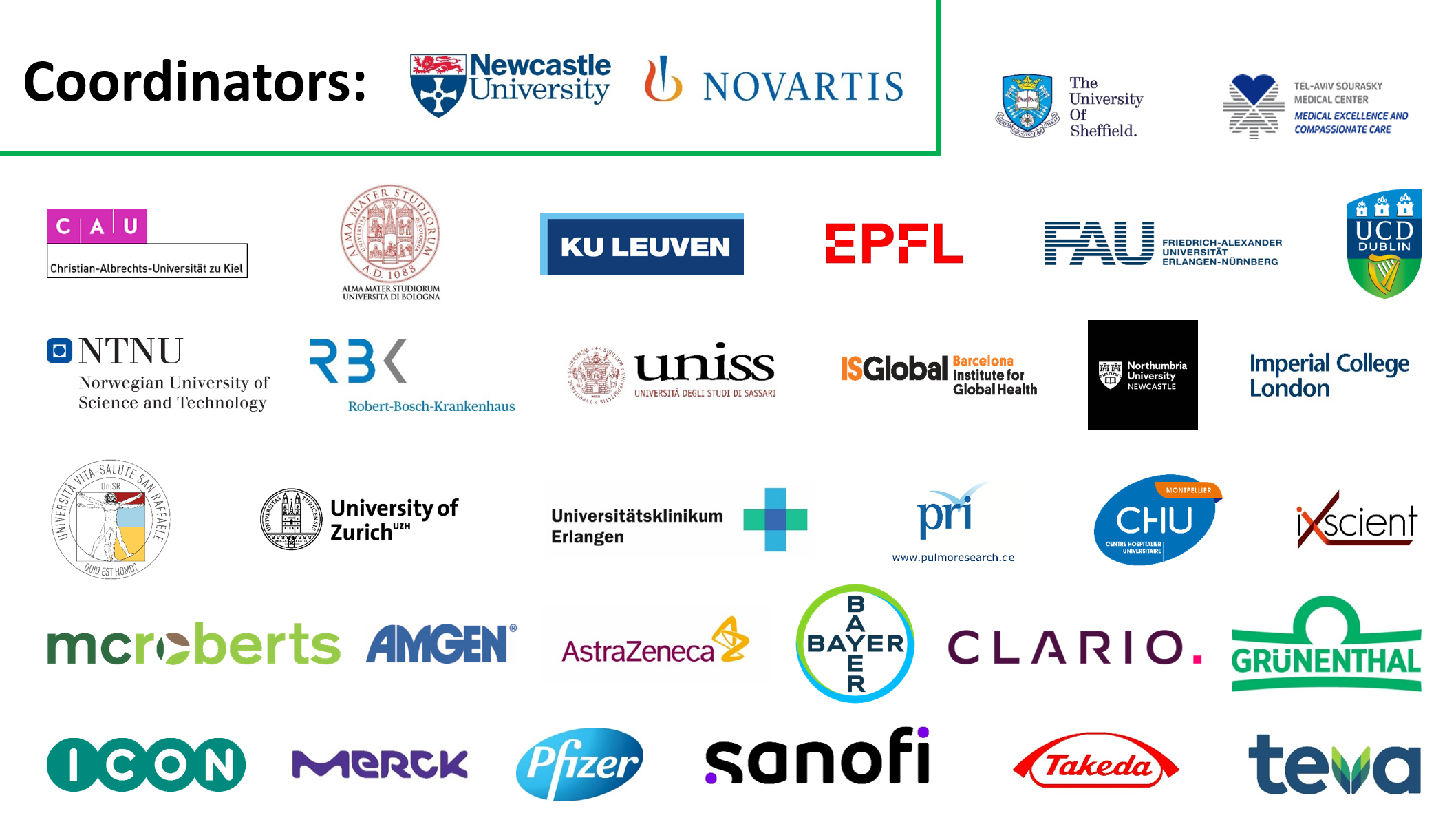The Mobilise-D consortium brought together over 300 leading scientists, clinicians, and industry professionals from 34 universities, hospitals, and companies. From 2019 to 2024, they collaborated to validate healthcare technology using body-worn sensors. Working closely with regulators and stakeholders, including patient and senior organizations, they ensured widespread acceptance and involvement throughout the project.
What was Mobilise-D IMI?
The consortium behind Mobilise-D consisted of many of the world’s leading scientists, clinicians, and companies specializing in mobility assessment and the use of body-worn sensors.
More than 300 professionals from 34 participating universities, hospitals, and industry organizations with the necessary technical, clinical, and regulatory expertise worked together over five years (2019-2024) to achieve the common goal of validating healthcare technology.
The consortium worked closely with regulators and other stakeholders to ensure that the solutions were accepted. Additionally, representatives from patient and senior organizations, regulatory bodies, and all other relevant stakeholders were involved throughout the project by participating in project management, stakeholder boards, and stakeholder events.


What are digital mobility outcomes?
In order to target mobility loss effectively and be able to prevent it, we need valid tools that can detect and measure how well someone walks, including speed, symmetry/efficiency, pain, and endurance. Existing mobility endpoints based on performance, patient self-reporting, and one-off assessment are resource intensive and lack sensitivity, which limits therapeutic development and clinical management.
A novel approach is needed that is low cost, simple, accurate and capable of use in the real world, including the home and the community. Wearable digital technology has the potential to measure and monitor real-world walking speed (RWS) and other mobility outcomes.
The term “digital mobility outcomes” summarizes the combination of the digital mobility assessment of real-world walking speed (RWS) as a primary outcome and other relevant mobility outcomes as secondary outcomes.
Why assess mobility in patients?
Optimal treatment of impaired mobility is a key healthcare challenge in the 21st century. However, there is a need for better ways to detect and measure mobility loss. Digital technology, including body worn sensors, has the potential to revolutionise mobility assessment. Many people living with chronic conditions or injury have reduced mobility. By implementing mobility assessment in clinical practice, practitioners can detect changes earlier and thereby treat their patients effectively and personalised.

“By validating digital mobility assessment, we will tackle a major public health problem and a bottleneck for clinical trial development in a regulatory environment – the increasing prevalence of mobility loss due to ageing and chronic disease.”
Mobility problems are often related to low physical activity, different gait disturbances, and frailty, which each affect large groups of European citizens over substantial periods of time. In addition, the chosen patient groups bring a broad and heterogeneous range of subject characteristics, resulting in a large proportion of chronic care needs. The patient groups included in Mobilise-D have been chosen because these patients represent different kinds of mobility problems with different trajectories of disability over time. Although our initial focus is on a restricted number of patient groups, we expect that results from the Mobilise-D project will be relevant for all conditions associated with mobility loss.
Objectives and achievements
- Objective 1 - Define DMOs
- Objective 2 - Cohorts
- Objective 3 - Clinical validity
- Objective 4 - Data
- Objective 5 - Standards
- Objective 6 - Impact
- Objective 7 - Dissemination
Define optimal Digital Mobility Outcomes for clinical validation through consensus, literature review and technical development.
Achievements:
- Comprehensive analysis and selection of Digital Mobility Outcomes and associated algorithms for a Technical Validation Study, incorporating literature review, previous work, and testing against existing data.
- Development and definition of protocols and devices needed for algorithm validation.
- Sensor validation using a sensor-agnostic approach, including standardised lexicon for mobility outcomes to inform algorithm development and future work.
- Successful Digital Mobility Outcome validation in patients and healthy cohort via the Technical Validation Study.
- Submission of two Qualification Advice requests to the EMA, resulting in two letters of support, and a pre-Letter of Intent submitted to the FDA for regulatory advice.
Use our clinical networks to leverage existing and new cohorts to support clinical validation of Digital Mobility Outcomes.
Achievements:
- Engagement with the patient cohorts for the Clinical Validation Study, incorporated associated clinical expertise, set targets for recruitments.
- Seventeen sites across the EU have recruited and are assessing participants.
- All cohorts (MS, COPD, PD and PFF) have successfully met their recruitment targets, and some went beyond them.
Determine the clinical validity of Digital Mobility Outcomes.
Achievements:
Publication of scoping reviews addressing evidence gaps in mobility endpoints, the use of DMOs in various cohorts, and real-world walking from a patient’s perspective.
- Ongoing Clinical Validation Study to determine construct validity, predictive capacity, thresholds, responsiveness, and minimal important difference.
- Collaboration with EFPIA partners to identify and contribute data from ongoing studies relevant to the project.
- Successful implementation of the Clinical Validation Study across different medical conditions (PD, MS, COPD, PFF), integrating Patient and Public Involvement and Engagement in all study design aspects.
Build a platform for robust digital data management, defining standards for storage, analysis and sharing of digital mobility data.
Achievements:
- Successful development and implementation of a comprehensive data management platform, including data transfer, ingestion, integration pipeline, and custom software tools, facilitating data sharing among partners.
- Collaboration with EFPIA partners to create eCOA forms, mobile applications, and eCRFs for the Mobilise-D studies.
- Advancing data standardization in wearable mobility devices through research publications and development of a data sharing agreement for Mobilise-D Technical and Clinical Validation study data.
Define and set the standards for technology-unbiased Digital Mobility Assessment.
Achievements:
- Establishment of standardized protocols for Technical and Clinical Validation studies, including a wearable Digital Mobility Assessment reference system and statistical analysis plans.
- Development of comprehensive standards regarding data format, type, capture, ingestion, integration, and device agnostic procedures.
- Creation of a standardized lexicon for mobility outcomes, sensor validation methodologies, and remote training approaches for clinical sites and study personnel.
- Integration of standards and approaches into EMA Qualification Advice applications.
- Definition of technical standards for devices for the use of Mobilise-D DMOs.
Create enduring impact by establishing the largest biobank of digital mobility data to support ongoing algorithm development, as well as technical and clinical validation.
Achievements:
- Participants’ data is centrally stored on a Data Management Platform and shared through the Mobilise-D data sharing policy.
- The Mobilise-D project provides access to data via its data sharing policy, with information and updates available on the project’s website.
- Committed to freely sharing data from the Technical Validation Study and Clinical Validation Study with the public.
Ensure dissemination of the project results and sustainability beyond the life of Mobilise-D.
Achievements:
- Mobilise-D has achieved significant impact through over 80 peer-reviewed publications and a comprehensive series of public webinars and tutorials.
- Development of manuals showcasing how to implement Mobilise-D tools and methods in future trials.
- Continuous dissemination of project results through the project’s website and social media outlets.
- Patient and Public Involvement and Engagement group and Patient and Public Advisory Group successfully implemented in all phases of Mobilise-D.
- Successfully securing follow-on funding grants to further amplify the project’s impact.
How was Mobilise-D IMI funded?
Mobilise-D was funded through the Innovative Medicines Initiative (IMI), Europe’s largest public-private initiative aimed at speeding up the development of better and safer treatments for patients. IMI supported collaborative projects and built networks of industrial and academic experts to boost pharmaceutical innovation in Europe.
Mobilise-D received funding from the IMI 2 Joint Undertaking under grant agreement No. 820820. This Joint Undertaking received support from the European Union’s Horizon 2020 Research and Innovation Programme and the European Federation of Pharmaceutical Industries and Associations (EFPIA).

Partners
The Mobilise-D Consortium consisted of over 300 research partners from 34 prestigious universities, hospitals, global pharmaceutical companies, and technical enterprises. Download a complete list (PDF, 858kb) of Mobilise-D Consortium researchers and investigators. This document reflects the complete list of people in the Mobilise-D Consortium who contributed to the design and implementation of the Mobilise-D project, including data collection.




